Want to find out more about Shadow Benny and the real reason why it is often confused with cilantro? Then this is for you.
A few years ago, a friend of mine got excited when she saw “Chardon Beni” growing in my yard. To me, this was a pesky little weed, which I battled for years, but to her, it was a culinary treasure.
Her excitement made me wonder, what is Shado Beni?
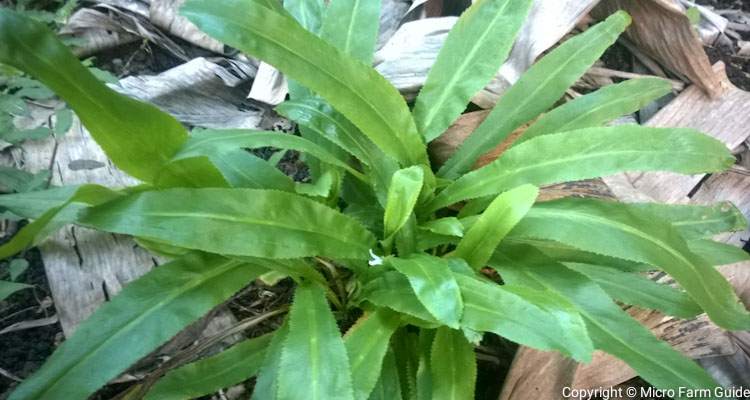
Shadow Benny is a saw-tooth, aromatic, flowering herb; native to the Caribbean, Central and South America but grown worldwide. It has a strong flavor and numerous medicinal benefits. It is used in various dishes, seasonings, sauces, as well as in traditional medicines.
While researching this herb, I came across some interesting anomalies. In this article, we are going to take a closer look at Shadow Benny, including the reason why it is often mistaken for other plants. Let’s dive in.
What Does Shadow Benny Look Like?
The various descriptive nicknames for Shado Beni give a hint to its appearance. It is a long-leaf, sawtooth herb with spikey flowers. While this gives a general idea, a picture says a thousand words.
Here is a picture of a Shadow benny plant.
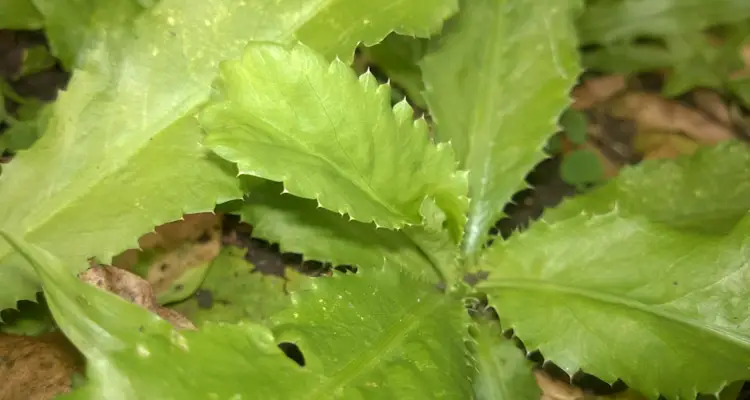
As you can see, the leaves are long with serrated edges. They tend to be stockier when grown in full sunlight and can be quite long when receiving partial shade.
During dry spells, the leaves tend to grow shorter, and the flowers are more prominent. These flowers are spiked and branch out from a stem.
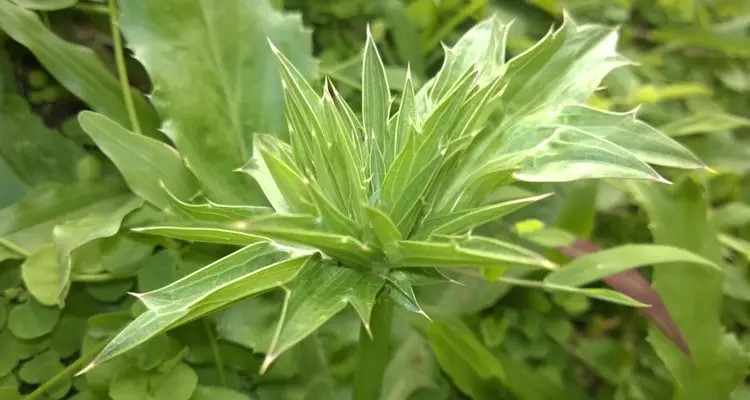
As the flowers mature, the growth of the leaves starts to slow. Unless cut, the flowers take over the entire growing area, making access to the rest of the plant painful.
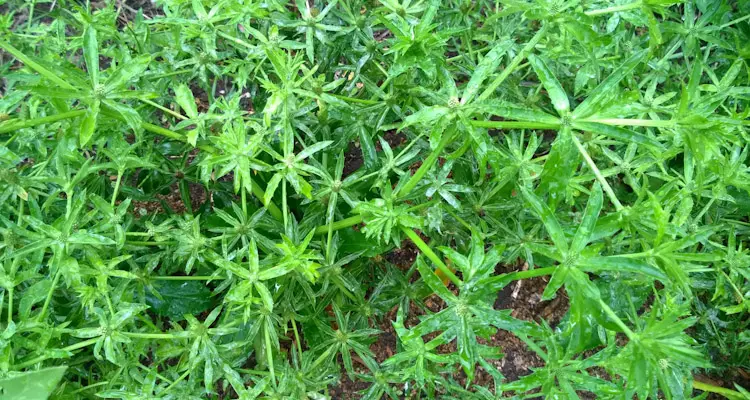
Is Shadow Benny The Same As Cilantro?
Shadow Benny are two completely different plants. You can tell them apart visually.
Shadow Benny (Eryingium Foetidum) has long, serrated leaves; with a bold aroma and intense flavor. Cilantro (Coriandrum Sativum) on the other hand, has a long, thin stem, with a fan-type leaf at the end; and a milder aroma and flavor.
Take a look at the image below. How hard was it to spot the difference?
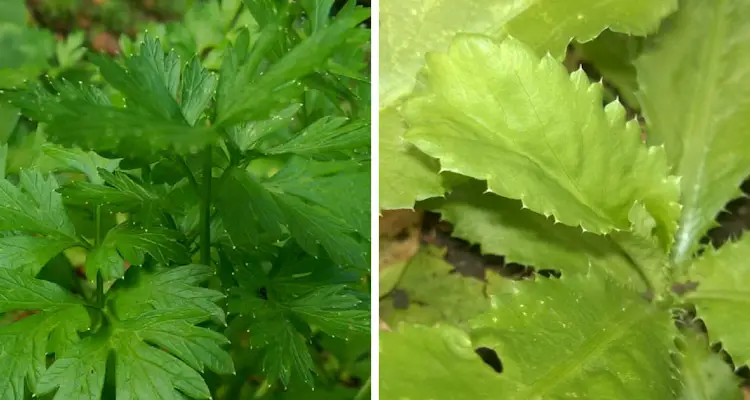
However, when you try to translate the various names of the plant into English, you might end up a bit confused. Some of the names translate as Cilantro and even Coriander.
As a result, many people use these names interchangeably, even though they are not the same plants.
What Are Some Other Names For Shadow Benny?
Shadow Benny (Eryingium Foetidum) is native to the Americas. However, it is now grown and has become part of culinary cultures throughout the world.
Here is a list of alternative names for Shadow Benny and the countries that use them.
| Name | Countries |
| Chardon Beni | Trinidad |
| Culantro | Dominican Republic, Puerto Rico |
| Bhandhania | Trinidad |
| Chadron Benee | Dominica |
| Coulante | Haiti |
| Fit Weed | Guyana |
| Shado Beni | Grenada, Trinidad |
| Shadow Benny | Grenada |
| Spirit Weed | Jamaica |
| Recao | Puerto Rico |
| Ngò gai or Mùi tàu | Vietnam |
| Phak Chee Farang | Thailand |
| Cilantro habanero, Cilantro extranjero | Mexico |
| Alcapate | El Salvador |
| Coentro do para | Brazil |
| Culantro de Pata | Honduras |
| Herbe à fer | Martinique, Guadeloupe |
| chi baraing, chi banla, chi sangkaëch | Cambodia |
| ketumbar, ketumbar Java | Malaysia |
| Cilantro | Philippines |
| Walanga | Indonesia |
Note: Shadow Benny is also referred to by many other descriptive and perceived origin names such as Thorny Coriander, Serrated Coriander, Sawtooth Coriander, Thai Parsley, Vietnamese Coriander.
While related, Shado Beni is not Coriander but belongs to the same Apiaceae family. It also possesses some of the benefits common to this family and then some.
What Are The Benefits Of Shadow Benny?
Shadow Benny is well known for its health benefits and has been used traditionally towards that end.
Shadow Benny has many nutritional and medicinal benefits. It is rich in Vitamins, Calcium, Iron, and Riboflavin. It aids in digestion and pain relief, as well as used in the treatment of various forms of inflammation, asthma, and even diabetes.
These benefits vary based on the part of the plant used.
For example, many people use the leaves to treat colds and fevers, while the roots are a diuretic and stimulant. However, some use the entire plant to help lower blood pressure and even as an aphrodisiac.
However, some benefits can be questionable and based on the individual’s personal view.
For instance, Shadow Benny also contains organic compounds, said to cause abortions if concentrated. Please be mindful of this.
How To Use Shadow Benny
Traditionally, shado beni has been eaten raw, boiled, and even turned into pastes. Many people see it as a cure-all and use it to treat anything from bad breath to inflammation. However, most people use it as a seasoning in dishes, including soups, stews, fish, and chicken.
Culinary Uses
The flavor of Shadow Benny varies considerably based on its stage of growth.
Salads – You can eat the raw leaves of the shado beni plant as a garnish or in salads.
Seasoning – Shadow Benny has an intense flavor. It is ideal for seasoning fish and chicken. You can also use it to add flavor to broths, soups, and sauces.
One my friends introduced me to Shadow Beni sauce but I usually combine it at other herbs to make a green seasoning.
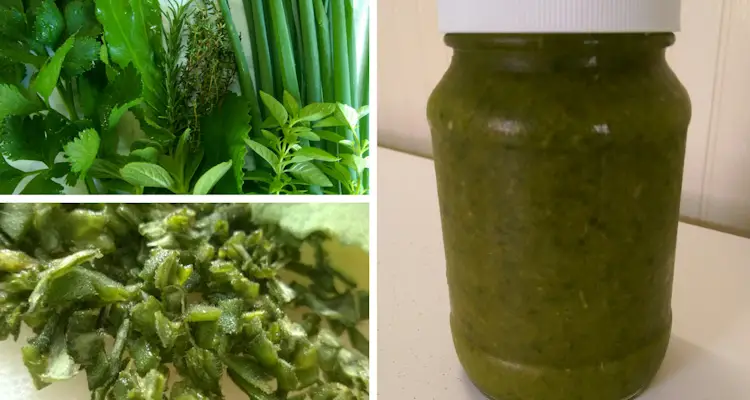
Substitution – Shadow Benny tastes a lot like a bolder version of coriander. Many people in Asian countries often use it as a substitute in their dishes. As a result, many people mistakenly refer to it as coriander.
Shado Beni Teas – Medicinal benefits aside, many people enjoy the taste of tea drawn from Shadow Benny.
Medicinal Uses
Over the years, people have used Shadow Benny for just about every ailment under the sun. In the absence of scientific data to prove its effectiveness in many cases, many people swear by their experiences.
Shadow benni is used in traditional medicines to treat fevers, burns, earache, hypertension, constipation, diabetes, fits, malaria, stomachache, worms, infertility complications, snake bites, scorpion stings, and asthma.
Some of the traditional uses and claims may seem far-fetched. However, studies into the properties have confirmed the antimicrobial and antimalarial properties.
How To Grow Shadow Benny?
Shadow Benny is an easy plant to grow both in soil and containers. It can grow from seeds, cuttings, or side shoots. It requires moist soil and enough space where it is free to spread.
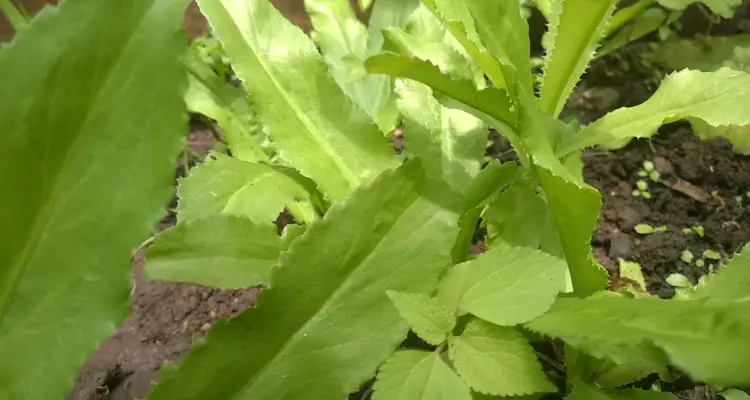
To grow shadow Benny from seed, scatter some seeds over a small area, then water them in. If you prefer, you can start these in pots and separate them after they germinate into individual cells or pots.
If you purchase the entire plant, you can cut off the leaves and place the roots into a jar of water, changing it daily. After a few days, you will notice new growth. At this time, you can plant it into a pot or directly in a shaded part of the garden.
Shadow Benny usually grows into a stool over time. If you wish, you can carefully dig this stool up and separate the plants. You can replant these individually.
I prefer the last method. However, you can purchase seeds if you cannot get ahold of a plant.
Where To Buy Shadow Benny?
Although Shadow Benny is a tropical plant, it is often grown in temperate regions as an annual plant.
You can purchase Shadow Benny at farmer’s markets, supermarkets and even online stores. Remember, the name might be different based on your location.
I was surprised to see the seeds for sale on Amazon. You can check them out here.
Final Thoughts
Shadow Benny is a tropical herb with many names.
It flavors dishes around the world and is well known for its medicinal benefits.
While most of the claims seem too good to be true, science is slowly proving them a possibility.
From all this, it is easy to see why the French Patois name, Chadon Beni, is translated as Blessed Herb.
Related Questions
How To Harvest Shadow Benny?
To harvest Shadow Benny leaves, peel the lower leaf back and cut at its base. Avoid touching the flower if possible: they are sharp. If you intend to harvest the entire plant, carefully dig around the stool. You may wish to transplant the young plants at another location.
How To Keep Shadow Benny Fresh?
You can keep Shadow Benny fresh by storing it in a refrigerator. Remove any excess water from the leaves and pack them loosely in a bag. Most will remain fresh for a few days but up to two weeks if you choose large, firm, shiny leaves.
References
Plantnet Project. Eryngium Foetidum. Plantnet-project.org. Accesses July 2021
World Crop. Culantro. Worldcrop.org. Accessed July 2021
Vietnam Online. Thorny Coriander. Vietnaonline.com. Accessed 2021
Hort Purdue. Culantro. Hort.Purdue.org. Accessed July 2021
